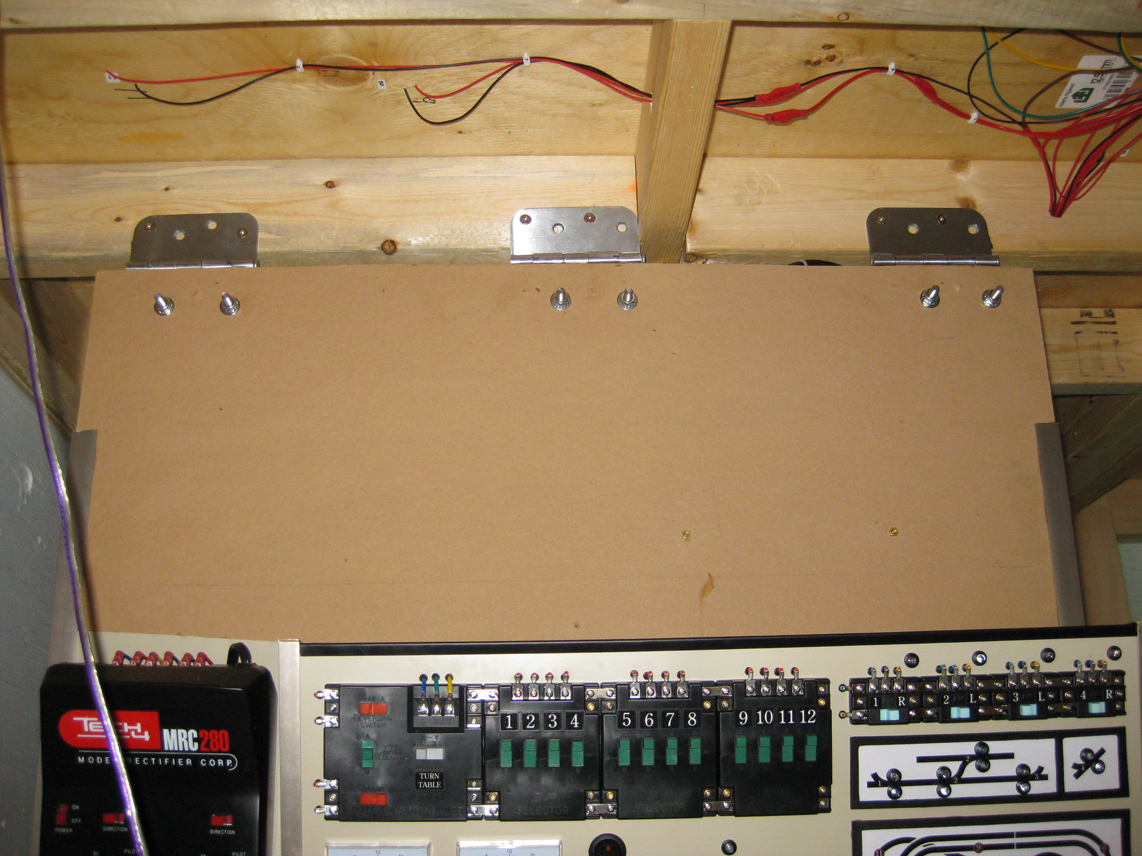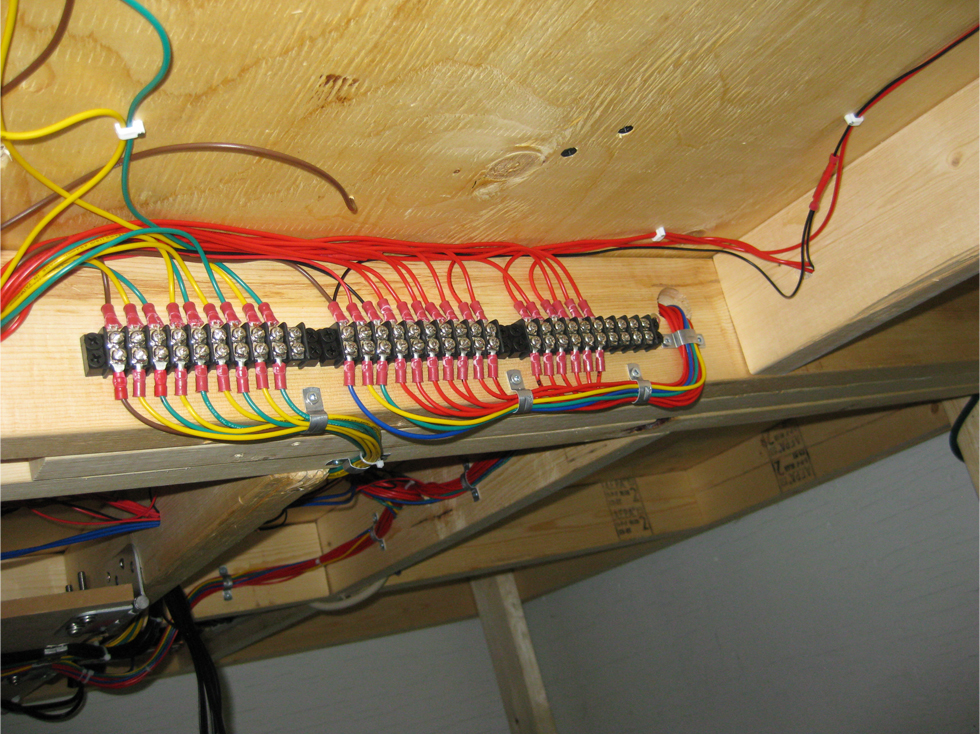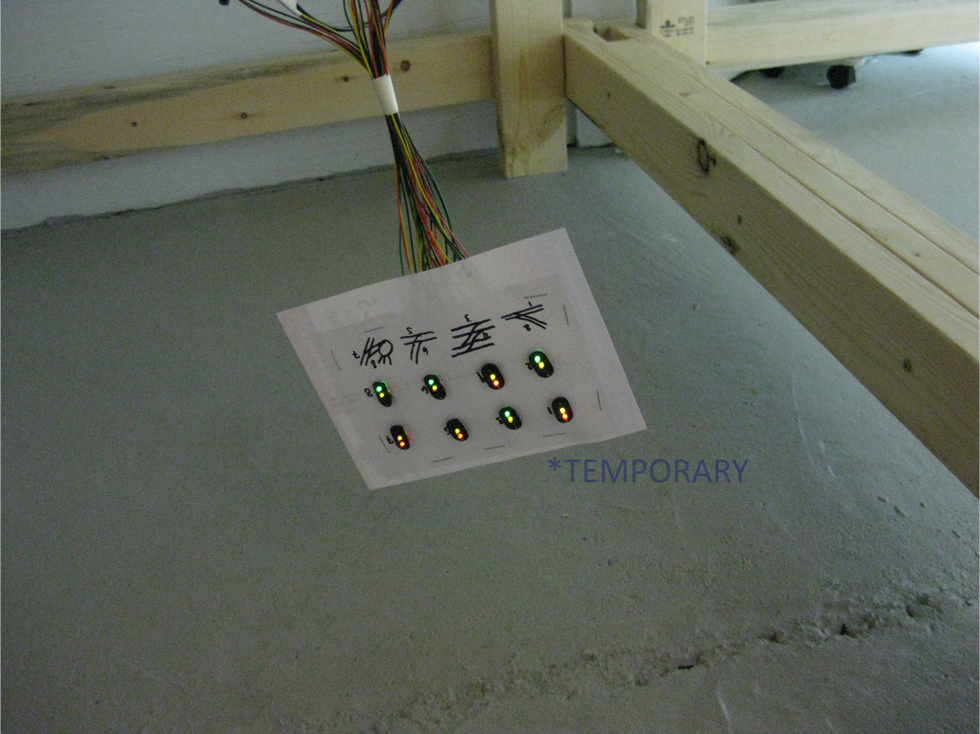My wiring and control panel are finally complete! My challenge this past week
was to move the control panel down to my basement and connect it to my
layout.
I first attached the back of control unit base to the three 4” hinges with six
1/4” bolts. This allows the control unit to fold under the table when not in
use. However, I have not yet made a final decision on how the unit will latch
when in its upright position. For now I fastened it in the upward position
with three screws.
I ran the leads from the control unit and hooked them up to the corresponding
terminal screws on the previously installed terminal strips. The terminal
strips made it very easy to detect any crossed over wires, and even easier to
correct the problems as I only needed to swap the crossed wires to the correct
screws. Remember, it doesn’t matter how organized or well planned your wiring
layout is, mistakes will happen, so leave room to make corrections!
I kept the layout wires attached to the benchwork using small metal cable
fasteners. These can be purchased at any local hardware store. I purchased
mine at Canadian Tire for $1.99 for 20, which compared to other products and
retailers I found, is a pretty good deal. Small zip-ties also help to keep
wires organized and looking neat.
While testing my control unit, I realized that I needed a higher powered AC
power source to power my switch machines, separate from my MRC Tech 4 280
power pack. For this, I mounted an older MRC power pack to the underside of my
benchwork and ran the new AC line back into my control box. This second power
source can also act as an additional 12V DC source in the future. You can see
it in the top right corner of the image above.
To provide reliable safe power to the different components, I installed a
surge protected power bar below my benchwork. This is then connected by and
extension cord to a 120V wall outlet.
I originally didn’t plan a master on/off switch into my control panel design,
something I definitely should have done. Now I have no way to turn my
components off, including the power packs. To solve this, I purchased a rocker
switch ($2.99 from Princess Auto) rated at 120V 20A, which I tapped into the
cord on the power bar.
I then mounted the switch into a standard light switch cover panel. I drilled
a hole into the front of my benchwork beside my control unit so the rocker
switch panel could fit flush against the bench. This switch now cuts the power
off to the power bar so I can leave my layout plugged into the wall outlet at
all times.
The track signals are still all displayed together on a temporary paper panel.
This is purely for testing and making sure the signals work correctly when
switching tracks. They will eventually be positioned on standards in the
necessary positions along the tracks.
Other than a few small required adjustments, everything works great as far as
the electrical system goes. The dual cab control works awesome and I couldn’t
be happier with how everything turned out. The next step will be to find a
method to easily raise and lower the control panel and latch it when it’s
upright. I’m also going to start smoothing out flaws in my track work and most
importantly, take out the steep grade coming off of my trestle.
Also check out my Design and Planning page for updated schematics for
different systems on my layout so far!

















4 comments
Nice!!!!!
ReplyDeleteWow! You've cleared up a lot of questions I had about wiring! Thanks and well done!
ReplyDeleteWow! You've cleared up a lot of questions I had about wiring! Thanks and well done!
ReplyDeleteHP Board Plus Two Students this is 1st year your Education in Inter Colleges Session Start Month of Jun and July,HP Board Plus One HP Board +1 Textbook Every Year 3 to 4 Laks of Students Appear Collages,HP Board Plus One Students your Text Books Get Collages,Himachal Pradesh Board Plus Two Students Get your Collage Text Books Subject in Arts Group,Science Group,Commerce Group for Hindi,English,Urdu Medium Complete Text Books
ReplyDelete